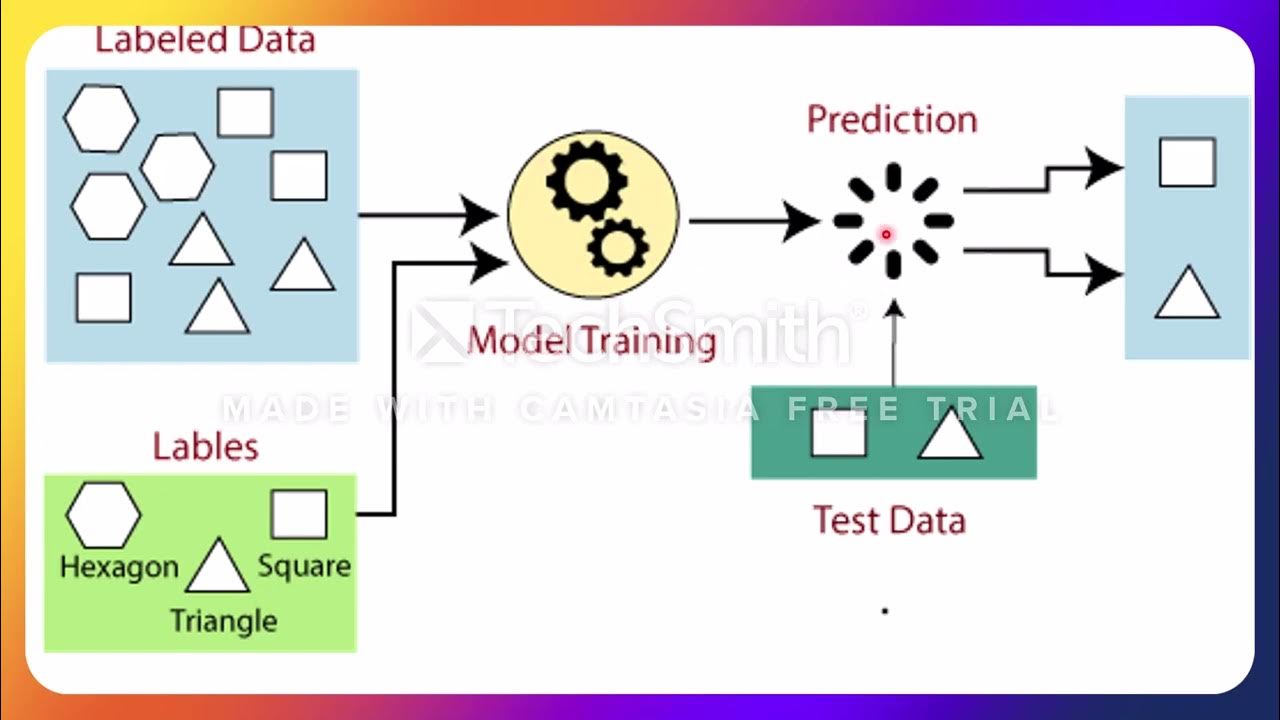#7 Machine Learning Specialization [Course 1, Week 1, Lesson 2]
Summary
TLDRThis video introduces unsupervised learning, a machine learning technique where data has only input features without labeled outputs. It highlights clustering, anomaly detection, and dimensionality reduction as key examples of unsupervised learning. Clustering groups similar data, while anomaly detection identifies unusual events, such as detecting fraud in financial transactions. Dimensionality reduction compresses large datasets while preserving key information. The video contrasts supervised and unsupervised learning, using examples like spam filtering and market segmentation. Future videos will cover anomaly detection and dimensionality reduction in greater detail.
Takeaways
- 📚 Unsupervised learning involves data with inputs (X) but no output labels (Y), where the algorithm seeks to find structure or patterns.
- 🔍 Clustering is a type of unsupervised learning that groups similar data points together.
- 🕵️♂️ Anomaly detection, another form of unsupervised learning, is used to identify unusual events, which is crucial for applications like fraud detection in finance.
- 📊 Dimensionality reduction is a technique that compresses large datasets into smaller ones while preserving as much information as possible.
- 📧 Spam filtering is an example of supervised learning, where emails are labeled as spam or not spam for training purposes.
- 📰 The Google news example is a case of unsupervised learning where clustering algorithms are used to group similar news articles.
- 📈 Market segmentation can be approached as an unsupervised learning problem, allowing the algorithm to discover market segments automatically.
- 🩺 Diagnosing diabetes is similar to the breast cancer classification example in supervised learning, where the output is labeled as having diabetes or not.
- 📚 The video promises to delve deeper into anomaly detection and dimensionality reduction in later parts of the specialization.
- 💡 Jupyter notebooks are highlighted as an exciting and useful tool in machine learning, to be explored further in upcoming videos.
Q & A
What is unsupervised learning?
-Unsupervised learning is a type of machine learning where the data comes only with inputs (X) without output labels (Y). The algorithm is tasked with finding some structure or pattern in the data without any pre-defined labels.
How does unsupervised learning differ from supervised learning?
-In supervised learning, the data includes both inputs (X) and output labels (Y), whereas in unsupervised learning, only the inputs (X) are provided, and the algorithm must discover the structure or patterns within the data on its own.
What is clustering in the context of unsupervised learning?
-Clustering is a type of unsupervised learning where the algorithm groups similar data points together. It is used to identify natural groupings or clusters within the data without any prior knowledge of the group labels.
What is anomaly detection and why is it important?
-Anomaly detection is a type of unsupervised learning used to identify unusual or anomalous events within data. It is crucial for applications like fraud detection in financial systems, where unusual transactions might indicate fraudulent activities.
What is dimensionality reduction and how does it work?
-Dimensionality reduction is a technique in unsupervised learning that compresses large datasets into smaller ones while retaining as much information as possible. It helps in managing the 'curse of dimensionality' by reducing the number of variables under consideration.
Why is anomaly detection important in the financial sector?
-Anomaly detection is important in the financial sector because it helps in identifying unusual transactions that could be indicative of fraud. By detecting these anomalies, financial institutions can take preventive measures to protect their systems and customers.
How does clustering help in market segmentation?
-Clustering can help in market segmentation by allowing the algorithm to automatically discover market segments based on customer data without any pre-defined categories. This can lead to more targeted marketing strategies and improved customer satisfaction.
What is the difference between spam filtering and clustering in terms of learning types?
-Spam filtering is a supervised learning problem where emails are labeled as spam or non-spam, while clustering is an unsupervised learning technique that groups similar data points together without any prior labels.
How is the Google news example related to unsupervised learning?
-The Google news example is related to unsupervised learning because it involves using a clustering algorithm to group similar news articles together without any pre-defined labels, allowing the algorithm to discover patterns and groupings on its own.
What is the role of Jupyter notebooks in machine learning?
-Jupyter notebooks play a significant role in machine learning as they provide an interactive environment for data analysis, visualization, and model experimentation. They allow for the combination of code, text, and mathematical equations in a single document, facilitating the machine learning workflow.
Why are anomaly detection and dimensionality reduction covered later in the specialization?
-Anomaly detection and dimensionality reduction are covered later in the specialization to ensure a foundational understanding of unsupervised learning through clustering before diving into more complex topics. This allows for a gradual build-up of knowledge.
Outlines

This section is available to paid users only. Please upgrade to access this part.
Upgrade NowMindmap

This section is available to paid users only. Please upgrade to access this part.
Upgrade NowKeywords

This section is available to paid users only. Please upgrade to access this part.
Upgrade NowHighlights

This section is available to paid users only. Please upgrade to access this part.
Upgrade NowTranscripts

This section is available to paid users only. Please upgrade to access this part.
Upgrade NowBrowse More Related Video

1.2. Supervised vs Unsupervised vs Reinforcement Learning | Types of Machine Learning

#6 Machine Learning Specialization [Course 1, Week 1, Lesson 2]

Supervised vs. Unsupervised Learning

The Fundamentals of Machine Learning

L8 Part 02 Jenis Jenis Learning

Lecture 06: Exploring Unsupervised Learning: From Clustering to Anomaly Detection
5.0 / 5 (0 votes)